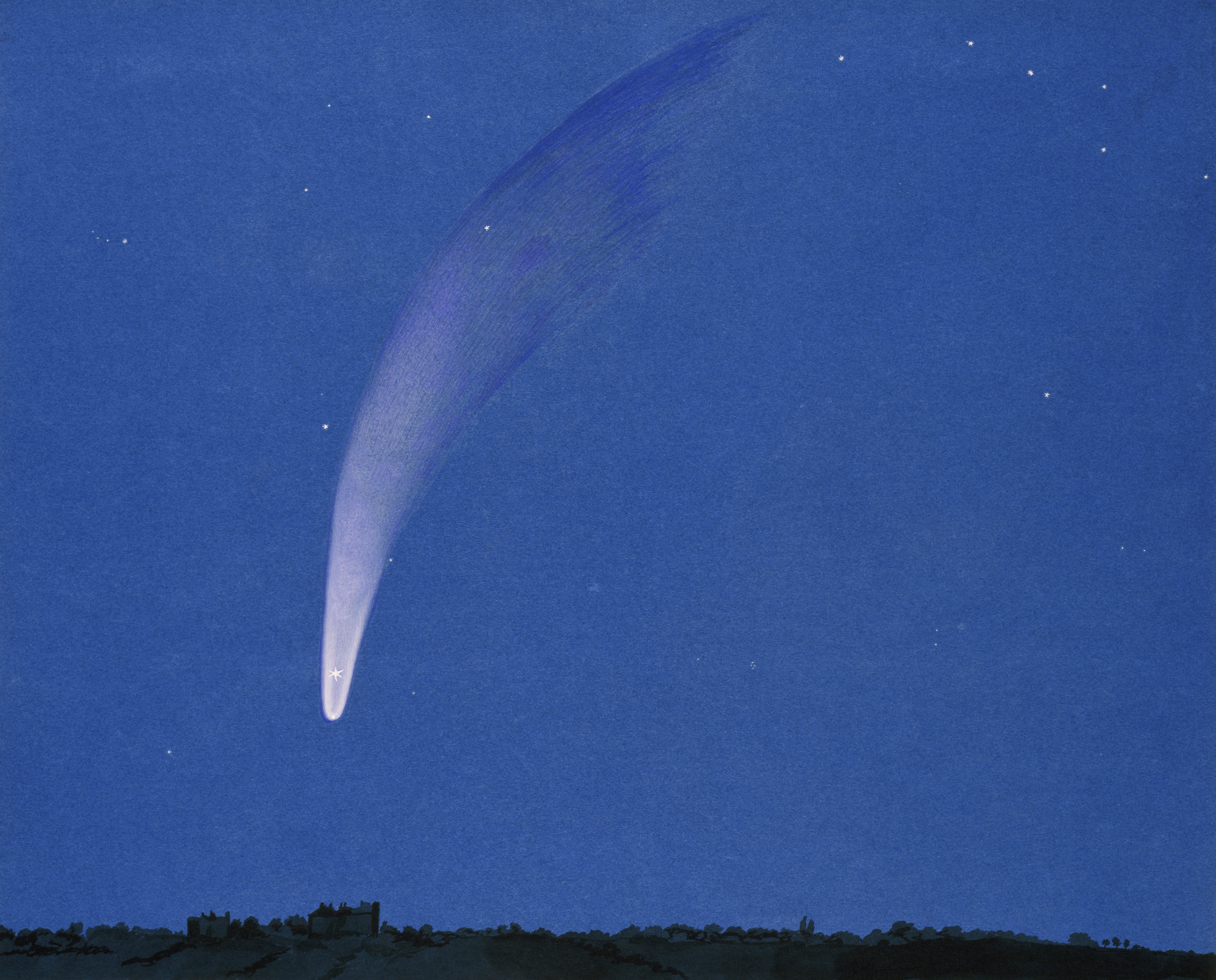Fine weather. P. M. — To White Pond.
September 29, 2018
One or two myrtle-birds in their fall dress, with brown head and shoulders, two whitish bars on wings, and bright-yellow rump.
Sit on Clamshell, looking up the smooth stream. Two blue herons, or “herns,” as Goodwin calls them, fly sluggishly up the stream. Interesting even is a stake, with its reflection, left standing in the still river by some fisherman.
Again we have smooth waters, yellow foliage, and faint warbling birds, etc., as in spring. The year thus repeats itself.
Catch some of those little fuzzy gnats dancing in the air there over the shelly bank, and these are black, with black plumes, unlike those last seen over the Cassandra Pond.
Brushed a spectrum, ghost-horse, off my face in a birch wood, by the J. P. Brown cold Heart-Leaf Pond. Head somewhat like a striped snake.
That pond is drier than I ever saw it, perhaps [No, have seen it so before.]—all but a couple of square rods in the middle, —and now covered with cyperus, etc. The mud is cracked into large polygonal figures of four to six sides and six to twelve inches across, with cracks a half to three quarters of an inch wide.
See what must be a solitary tattler feeding by the water’s edge, and it has tracked the mud all about. It cannot be the Tringa pectoralis, for it has no conspicuous white chin, nor black dashes on the throat, nor brown on the back and wings, and I think I see the round white spots on its wings. It has not the white on wing of the peetweet, yet utters the peetweet note!— short and faint, not protracted, and not the “sharp whistle” that Wilson speaks of.
The lespedeza leaves are all withered and ready to fall in the frosty hollows near Nut Meadow, and [in] the swamps the ground is already strewn with the first maple leaves, concealing the springiness of the soil, and many plants are prostrate there, November-like.
High up in Nut Meadow, the very brook — push aside the half-withered grass which (the farmer disdaining to cut it) conceals it — is as cool as a spring, being near its sources.
Take perhaps our last bath in White Pond for the year. Half a dozen F. hyemalis about.
Looking toward the sun, some fields reflect a light sheen from low webs of gossamer which thickly cover the stubble and grass.
On our way, near the Hosmer moraine, let off some pasture thistle-down. One steadily rose from my hand, freighted with its seed, till it was several hundred feet high, and then passed out of sight eastward. Its down was particularly spreading or open. Is not here a hint to balloonists?
Astronomers can calculate the orbit of that thistle-down called the comet, now in the northwest sky, conveying its nucleus, which may not be so solid as a thistle’s seed, some whither, but what astronomer can calculate the orbit of my thistle-down and tell where it will deposit its precious freight at last? It may still be travelling when I am sleeping.
September 29, 2018
H. D. Thoreau, Journal, September 29, 1858
One or two myrtle-birds in their fall dress, with brown head and shoulders, two whitish bars on wings, and bright-yellow rump. See September 23, 1855 (“A little wren-like (or female goldfinch) bird on a.willow at Hubbard’s Causeway, eating a miller: with bright-yellow rump when wings open, and white on tail. Could it have been a yellow-rump warbler?”); October 14, 1855 ("Black bill and feet, yellow rump, brown above, yellowish-brown on head, cream-colored chin, two white bars on wings, tail black, edged with white, — the yellow-rump warbler or myrtle-bird without doubt.”)
Half a dozen F. hyemalis about. See September 29, 1854 ("I hear a very pleasant and now unusual strain on the sunny side of an oak wood from many — I think F. hyemalis, though I do not get a clear view of them. Even their slight jingling strain is remarkable at this still season.") See also September 24, 1854 (" Do I see an F. hyemalis in the Deep Cut? It is a month earlier than last yea"); October 5, 1857 ("It is evident that some phenomena which belong only to spring and autumn here . . . the myrtle-bird and F. hyemalis which breed there, but only transiently visit us in spring and fall.")
The year thus repeats itself. See May 5, 1860 ("It takes us many years to find out that Nature repeats herself annually”)
Brushed a spectrum, ghost-horse, off my face in a birch wood. See ; August 29, 1858 (“The ghost-horse (Spectrum) is seen nowadays, — several of them.”)
Take perhaps our last bath in White Pond for the year. See September 27, 1856 ("Bathed at Hubbard's Bath, but found the water very cold. Bathing about over”) See also A Book of the Seasons, by Henry Thoreau, The Luxury of Bathing
The comet, now in the northwest sky. See September 23 , 1858 (Saw the comet very bright in the northwest. "); October 5, 1858 ("The comet makes a great show these nights.")
tinyurl.com/HDT580929





No comments:
Post a Comment